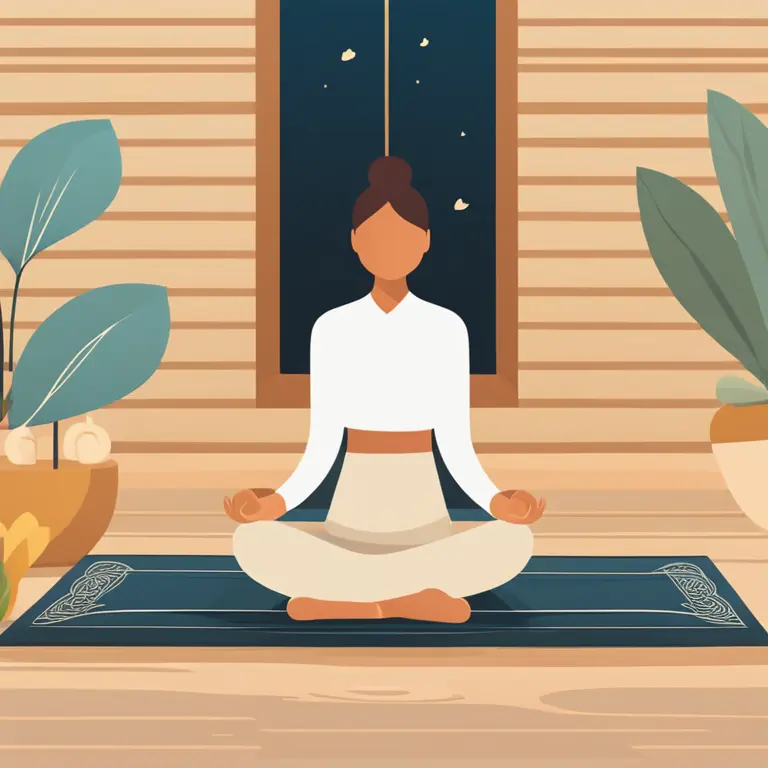
Guiding Your Meditation Practice
Learn to cultivate inner peace and awareness through our step-by-step guide on leading a mindfulness meditation session.
article by Hina Kurosawa
Introduction to Mindfulness Meditation
Meditation has been practiced for centuries, but only recently has mindfulness meditation gained popularity for its stress-reducing benefits. As our lives become more interconnected with technology and faster-paced than ever, finding a serene mental space is crucial for balance. Mindfulness meditation allows individuals to anchor themselves in the present, encouraging a heightened sense of awareness and calm. This practice involves observing thoughts and breaths without judgment, building a bridge to deeper understanding and inner peace.

Setting the Environment
The ambiance plays a pivotal role in the effectiveness of your meditation session. Choose a quiet spot free from distractions, a place where you feel at ease. Set up the space with comfortable seating, perhaps a cushion or a chair, and consider dimming the lights or lighting candles to promote relaxation. Soft, instrumental music or nature sounds can also enhance the atmosphere. The goal is to create an environment that aids you in centering your thoughts and focusing on the meditative process.

Starting Your Practice
As you begin, take a few moments to settle into your physical space. Start by gently closing your eyes and drawing attention to your breath. Inhale deeply and exhale slowly, focusing solely on the rhythmic patterns of your breathing. This initial step serves as the foundation of mindfulness meditation, guiding your mind to concentrate on the present and easing it into a state of tranquility.

Being Present and Observing Your Mind
One of the key objectives in mindfulness meditation is to observe your thoughts without becoming emotionally involved. Allow thoughts to pass through your mind like clouds drifting across the sky—some may be light and sparse, others heavy and brimming with rainfall—but all are temporary. Acknowledge each thought as it arises and gently bring your focus back to your breath. This trains the mind to engage with the present moment and cultivates a practice of observation without attachment.

Managing Distractions
Distractions are natural during meditation, whether they are external, like a sudden noise, or internal, like a persistent worry. When you notice a diversion, acknowledge its presence without frustration. Patience is key. Gently refocus your awareness back to your breathing and the present moment. With regular practice, the ability to maintain concentration amid disruptions will improve, fostering greater mindfulness both in meditation and daily life.
Concluding Your Session
When you feel ready to conclude your meditation, do so gradually. Take a moment to recognize the state of calm and awareness you have achieved. Slowly bring movement back to your fingers and toes, and when it feels right, open your eyes. It's important to transition smoothly back into the external world, maintaining the sense of peace you cultivated during your meditation.
Incorporating Mindfulness into Daily Life
Mindfulness meditation doesn't end with your session; it's a skill that can be carried into your daily routine. Practice being present in mundane tasks—like washing dishes or walking the dog—and observe the sensations and experiences around you. By remaining aware and centered throughout the day, you contribute to an ongoing state of mindfulness that complements your dedicated meditation practice.
Published: 1/18/2024
Modified: 1/18/2024
More predictions
Come back here soon to learn more about yourself and your future


Mindfulness Meditation As A Tool for Anxiety Relief
Discover how mindfulness meditation can be a powerful tool for anxiety relief, fostering a sense of peace and well-being through simple, guided practices.


Mindfulness Meditation: A Path to Lasting Happiness
Discover how mindfulness meditation can enhance your sense of wellbeing and lead you to a happier life in this insightful article.


A Beginner's Guide to Mindful Meditation Explained
Discover the essentials of mindful meditation to start your journey towards inner peace and heightened awareness with this beginner-friendly guide.